On a clear summer night on the south Connemara coast, the chain of islands stretching out from Maínis look like stepping stones inviting you to move closer to the hypnotic reds, oranges and purples that bubble up from a sun dissolving into the ocean horizon.
So, this year, we accepted the invite.
Our band of campers – four adults and eight children, ranging in age from toddler to teenager – took to a trusty old wooden curragh kindly lent by our friend Maínis fisherman Johnny Cloherty, and motored out West to the magical Mason Island.
Better known as Oileán Máisean in this “little Gaelic kingdom”, as the late, great writer and cartographer-explorer Tim Robinson described this region in one of his Connemara books, the island is uninhabited. It is only a short hop from Carna in Co Galway but feels decades away.
READ MORE
The last residents left the island for the mainland in the 1950s. All that remains today are the occasional day-trippers and holidaymakers staying in a few summer homes and visiting farmers checking on the sheep that rule the island now.
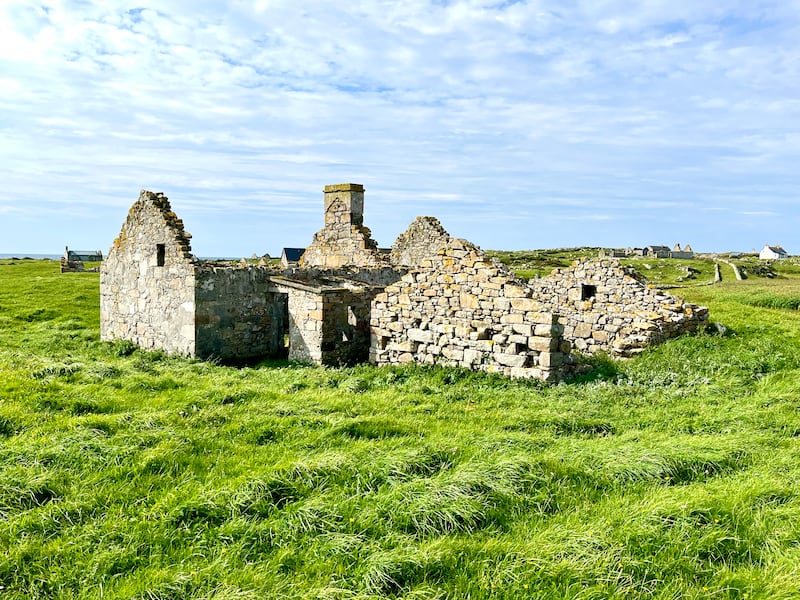
On a sunny day Mason’s majestic beach to the West of Maínis is as inviting as the setting sun is in the evening. The golden sands of Trá an Éadain, the beach of the face, is on the landward side and is the perfect beachhead for our camping invasion. In the old days, across the channel from Máisean on Maínis, people stood on Carraig na Blaoithe, the rock of the calling, to shout for a boat to come and collect them from across this fast-flowing sound.
Today the only calling is the baaing and bleating of sheep.
There is little need for footwear on the island, whether it is sand, grass or paving stone underfoot. Grassy trails over the large field above the beach are well worn by sheep and the soft expanse of green near a few ruined cottages is a perfect spot to pitch tents for our wild camping. An abundance of wildflowers – sheep’s-bit, hawkbit, oxeye daisy and wild carrot – make this meadow a beautiful canvas of colour on which to sleep.
[ Connemara Pony Show at 100: ‘This is like the Olympics of the Connemaras’Opens in new window ]
Unpredictable seas make the beach an unsuitable overnight mooring for the curragh so we motor up to the pier on the western part of the island. The tiny harbour offers safety and predictability, with the harbour gently filling up and emptying every six hours on the tides.
This stone-block harbour looks out towards Oileán Mhic Dara – St Macdara’s Island – where locals make their annual pilgrimage every July 16th to honour the principal patron saint of south Connemara fishermen. The stone chapel can be seen on the island from here.
Approaching Máisean’s harbour, it is easy to see why it is called An tAircín, the creek; a small channel has been cut from rock to form a passage to the beautifully built pier.
The entrance appears almost as an optical illusion as you only start to have sight of the channel on the approach. Trust is required but it is in small measure given the number of rocks and heavy seaweed lurking just below the surface. It is time for oars, not a boat engine.
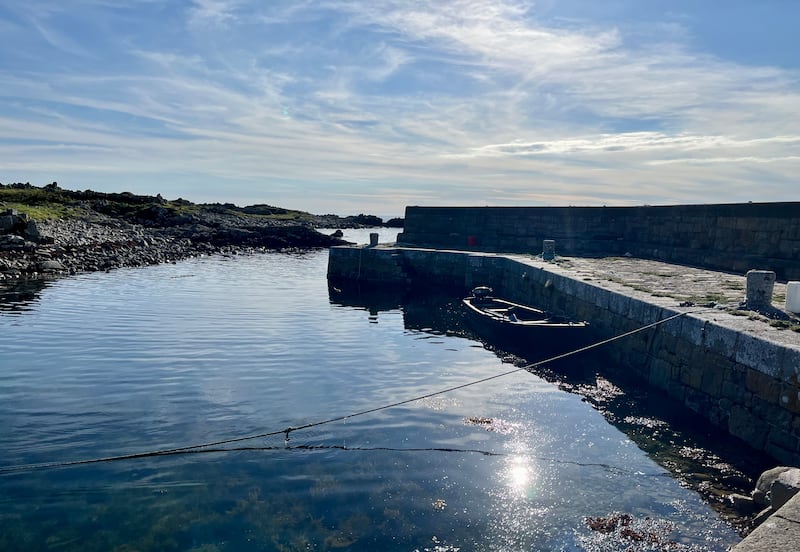
Two roads criss-cross the island like “the cuts in the crust of a hot cross bun” – as Robinson put it – with the crossroads sitting at the island’s highest point. While the western side with its pier has a work-like feel to it, the beach and dunes to the east offer a sandy playground of swimming and dune jumping for the temporary residents of Camp Máisean.
We find a perfect swimming spot in the turquoise waters of Trá Bheirtreach, oyster bed beach, next to the island’s main beach, and swim against the backdrop of the Twelve Bens mountains and Errisbeg hill near Roundstone in the distance. It is picture-postcard perfect.
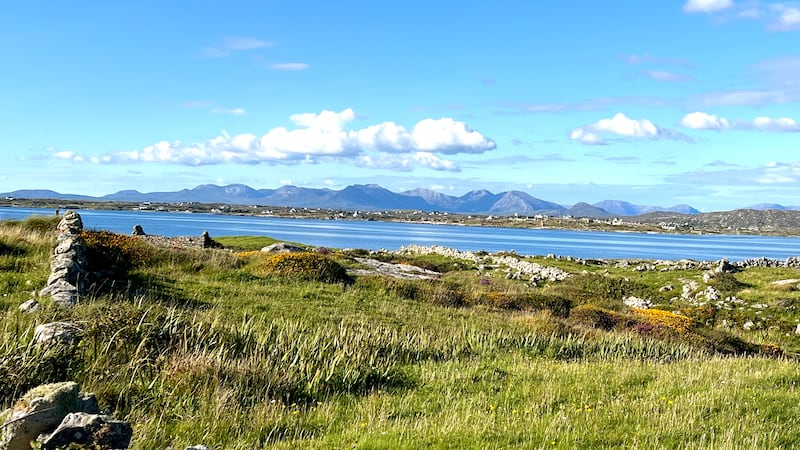
Cut-off from the mainland by a low tide and channels of water, this deserted island feels like the place to get away from it all. That’s why David Michiels, his wife Pascale Frateur and their son Ravelin chose Máisean for two weeks of their Irish holiday away from the Belgian couple’s busy and stressful working lives. We bump into them sitting on the beach.
This is their second visit to Máisean. They stay in one of the holiday homes on the island. Michiels, a civil servant who runs a Mexican restaurant in Antwerp part-time with his wife, loves the romance and tranquillity of Máisean, especially because there are few of the typical holiday activities.
“The great thing for us is that there is nothing to do. When you go on holiday, you have to visit that museum, you have to go inside that cathedral. That kind of holiday stress isn’t here because we are going to the beach today or fishing or walking around the island again. It is very relaxing that the options are so limited,” he says.
The family have been passing the time with swimming, walking, fishing and playing an old Viking game called Kubb that involves knocking over rocks with stones.
“We really look forward to coming here. You are obliged to enjoy the silence and the tranquillity and the nature, which is a great thing and very rare,” says Michiels.
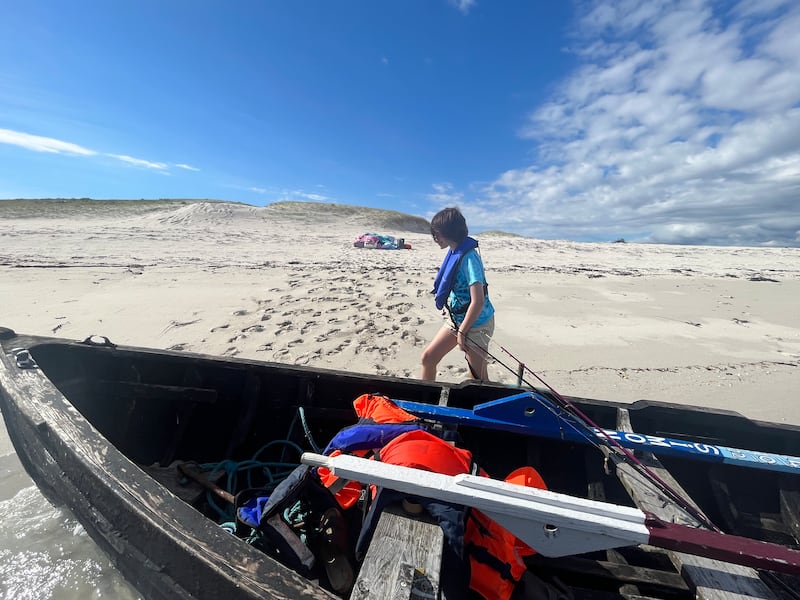
Nature’s soundtrack for their two-week holiday is either extreme quiet or howling winds.
“It is a bit exciting. You get wild dreams from the sounds. It is really strange: the silence or the wind. They are not nightmares, but really vivid dreams,” he says.
As many as 127 people or about 20 families once lived on this island, in the 1880s. Most cottages that dot the landscape are now derelict and crumbling. If only these houses and paths could talk. On Wednesday night, the island’s population soared from three to 15 with our group of overnight campers.
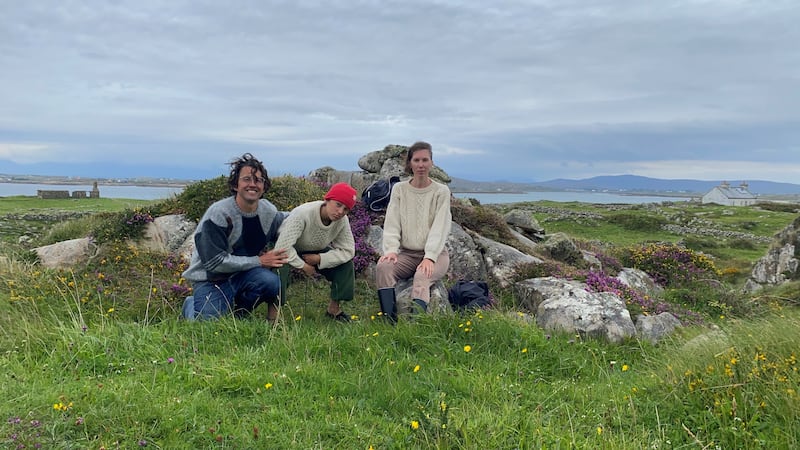
Michiels says he feels “very privileged” being among the only people on this tiny island, even if it means losing out on everyday comforts. Bad weather last week meant they were nine days into their holiday but only had enough food for seven. At one point, they were drinking rainwater and eating limpets and periwinkles to avoid opening another tin of beans.
The family are already feeling the stress of having to leave the island this weekend for the third week of their holiday elsewhere in Connemara.
“It is like, oh my God, we should have booked three weeks; we will have fish and chips on the mainland instead of periwinkles and limpets on the island,” he says.
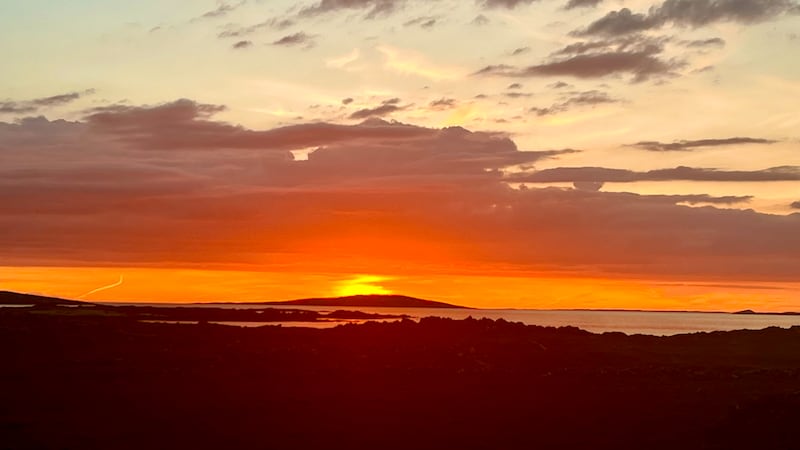
As evening arrives, Máisean’s light show begins. A dazzling sunset leaves us campers transfixed at the western sea horizon of colour. The contrails of one of the many approaching transatlantic flights in these skies looks like a rocket coming towards us.
Behind, above the mainland opposite Máinis, comes the day’s second optical illusion: the setting sun projects a sunset rainbow of red and orange that is like a laser beam shot down from a dark, angry rain cloud. The West is definitely awake.
Back in Dublin, meteorologist Joanna Donnelly kindly shared an explanation: “The eye is seeing the reds more vividly than any of the other colours because your light is already refracted and scattered by the low setting sun. It is the red end of the rainbow.”
Wednesday ends with a campfire, songs and stories, and of course roasted marshmallows. That night our tents are buffeted by the howling winds Michiels talked about but there is limited dreaming as there is limited sleep from the noise of flapping tents.
A day of exploring, seashell scavenging and swimming follows before we strike camp and take bumpy curragh rides home to Maínis on a rising tide and strong southeasterlies.
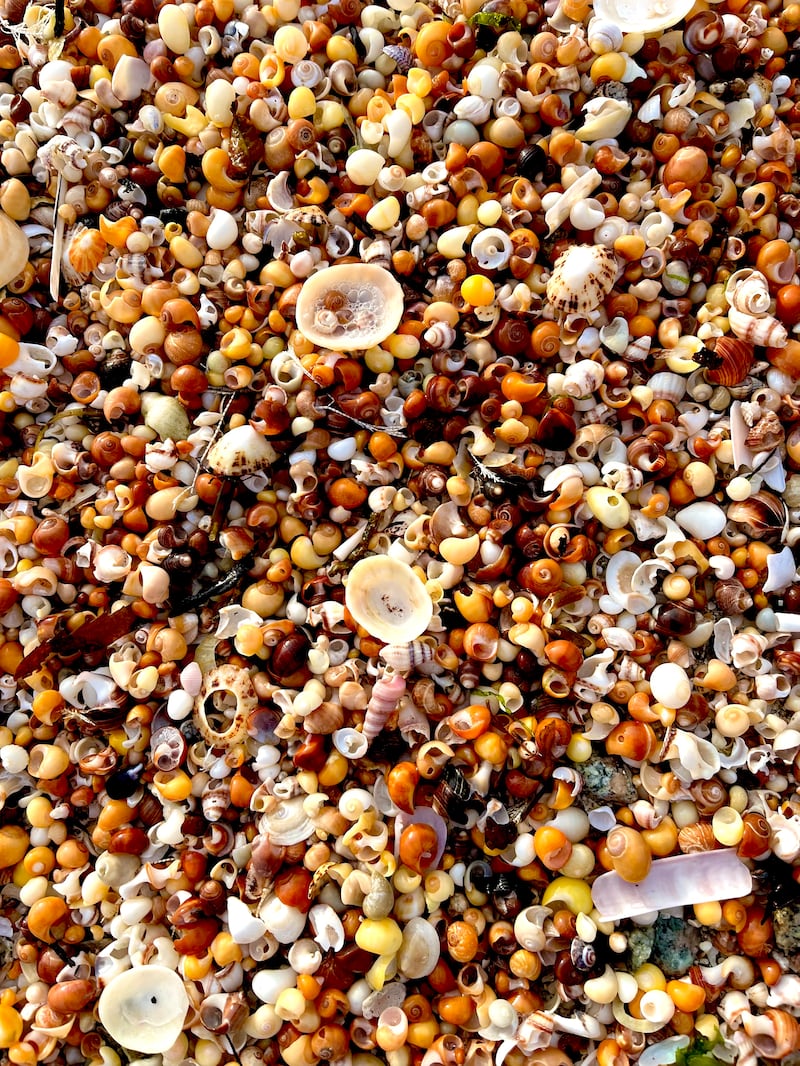
Getting away from it all has never been so memorable and majestic. We will have to return to our little kingdom.




















